Optimism, Inequalities, and Hope in the COVID-19 Pandemic – 4SD
I attended Dr David Nabarro’s debrief session of 18 June from Bangalore, India. As an admirer of strong leaders in public health through my work at GE Healthcare, trying to conceal my ‘fan-boy’ face was quite a challenge.
Dr Nabarro opened with discussing different facets of the pandemic and the manner in which the world should navigate a gradual opening of its social and economic systems. He mentioned of the cases steadily declining in Europe, on the contrary cases are increasing towards the East and in the USA. This strengthens the correlation between higher population and higher population densities to the number of infections. This correlation also poses a question, what would be the extent of damage caused to human life before countries with a higher population can flatten the curve, since there is never a shortage of people who could be infected.
Behaviour change is needed
While governments over the world over are doing their best (lockdowns, contact tracing, etc.) to manage the pandemic, there are a set of behavioural changes every individual has to exercise to manage the pandemic. These behavioural changes could be summarized as physical distancing of at least one meter and face protection when in public. These behavioural changes not only reduce the likelihood of exposure to the virus, they also reduce the amount of virus (viral load) one could be exposed to.
Emerging epidemiological and clinical aspects
There is also research towards patients suffering from lingering COVID and their identifying features. This research would help improve treatment protocols and improve patient outcomes. Amidst the various research efforts towards improving chances of recovery, dexamethasone’s efficacy towards helping patients recover from extreme inflammatory immune response due to COVID is being looked at as a wonder drug. The drug’s efficacy in reducing mortality was especially noted in patients in the late stages of disease progression. Another plus point of dexamethasone is its affordability.
Clinicians mention, an important feature worth tracking in COVID patients is blood oxygen saturation via SpO2 meters. Monitoring SpO2 early on can help clinicians undertake remedial actions timely (ex: Oxygen therapy), thus improving patient outcomes. To facilitate this effort, WHO has taken up in provisioning oxygen to several hospitals, particularly in developing countries. Such findings are important not only in reducing COVID mortalities, but also to uplift the general public sentiment.
It has been found that the virus spread is not uniform across regions. The avenues of high transmissibility often lie at the intersection of ability to physically distance in a region, ventilation of the region, and most importantly, prosperity of the region. Inequity of various forms, such as prosperity, gender, ethnicity, or age determine access to quality healthcare and consequently recovery. Governments must focus localized efforts towards identifying such areas of high incidence of patients and address the root cause for the virus spread.
A community-led public health response
The most recent demand in reaction to the pandemic is to increase public health spending. This is where I found Dr Nabarro’s suggestion very interesting. He suggests that models of public healthcare must be formulated that go outside the hospitals and to the communities. In my personal opinion, the advantage of such a system is that it would be agnostic to socio-economic inequalities and meet its intended purpose. I believe governments and corporations would be willing to implement such out-of-hospital public healthcare models for several reasons such as:
- Reduced inventory cost (beds, equipment, etc.) in hospitals.
- Improved employment prospects (nurses, facilitators, etc.) that aren’t always centred around big cities.
- Improved outreach.
- Improvement of technical infrastructure to meet the out-of-hospital public healthcare model, which in turn would create more employment and revenue.
Question and answers from participants
One of the attendees, Katherine, raised a question on the accessibility of the drug dexamethasone. It sparked an interesting discussion. While the drug is certainly very cheap, it should only be administered in qualified healthcare settings, which may not be available to socio-economic disadvantaged groups. This comment underscored the importance of equal healthcare access.
Another attendee, Anthony Zwi raised an interesting point of view that individuals are only as empowered as the local community organizations that lend to them that power. Horizontal empowerment and facilitation by the local organizations to the citizen is very important to ensure success of community initiatives.
Karin Wiedenmayer brought an interesting situation to notice. She mentions the ignorance of some governments towards remedying the pandemic situation and feeding misinformation to their people. WHO intends find any measure possible to rectify the situation, even if it means bypassing those governments.
I had my fan-boy moment soon after where I asked Dr Nabarro’s take on the following situation. Currently, some cities (ex: New Delhi) are admitting only symptomatic cases and not pre-symptomatic and asymptomatic COVID cases. I asked, “Is the WHO looking at issuing homecare guidelines to pre-symptomatic and asymptomatic patients so that their disease progression is slowed and it gives hospitals the required bandwidth to cater to critical cases?”. The good news was that issuing such guidelines is in active discussion within the WHO. Given my line of work (healthcare technology, software development, and AI), Dr Nabarro discussed with me the role of AI in COVID, which is promising, especially towards screening COVID patients.
Annie and Jonathan raised an interesting point where the correct use of language and managing mental health by the leadership helps to handle the public during the pandemic. A simple example of this would be using the phrase ‘physical distancing’ over ‘social-distancing’. Nendirmwa’s story brought us back to ground reality. She lost her job amidst this pandemic since her employer couldn’t empathize with her challenges of working from home. Sadly, this is an issue faced by many.
Such a discussion brought to light the fact that while the pandemic is a grave situation, we must use this as an opportunity to identify and improve our areas of socio-economic inequalities as we remedy the pandemic.
Follow One Young World on Social Media @OneYoungWorld
About this 4SD Reflection
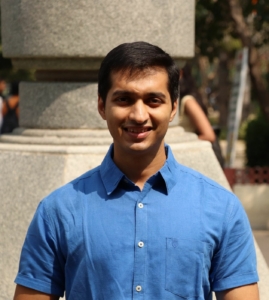
This article is a reflection by Sehaj Sharma following the COVID-19 Open Online Briefing of Dr David Nabarro on 18 June 2020. It forms part of a collaboration between 4SD and One Young World to inspire greater systems leadership amongst youth during the COVID-19 pandemic.
Sehaj is a One Young World Ambassador active in the space of healthcare technology and Artificial Intelligence. He is passionate about the Sustainable Development Goals of Quality Education, Good Health and Wellbeing, and Reduced Inequality. He represented these causes at the One Young World Summit 2019 in London.
COVID-19 Open Online Briefing #25
Thursday, 18 June 2020
08:30 – 09:30 CEST
The views and opinions expressed in these reflections form part of the collaboration between 4SD and One Young World to inspire greater systems leadership amongst youth during the COVID-19 pandemic. They do not necessarily reflect the official policy or position of 4SD as an organisation or it’s associated personnel. Any content provided by authors are of their opinion and are not intended to malign any religion, ethnic group, club, organization, company, individual or anyone or anything.
One Young World (OYW) is the global forum for young leaders. OYW identifies, promotes and connects the world’s most impactful young leaders to create a better world, with more responsible, more effective leadership. The annual OYW Summit convenes the brightest young talent from every country and sector, working to accelerate social impact. Learn more about OYW at https://www.oneyoungworld.com/

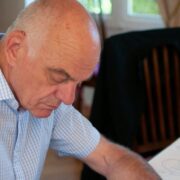
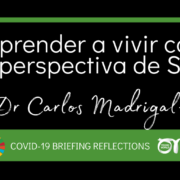
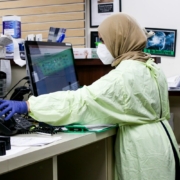
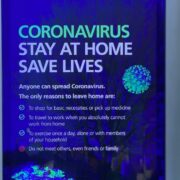

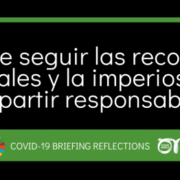

Leave a Reply
Want to join the discussion?Feel free to contribute!